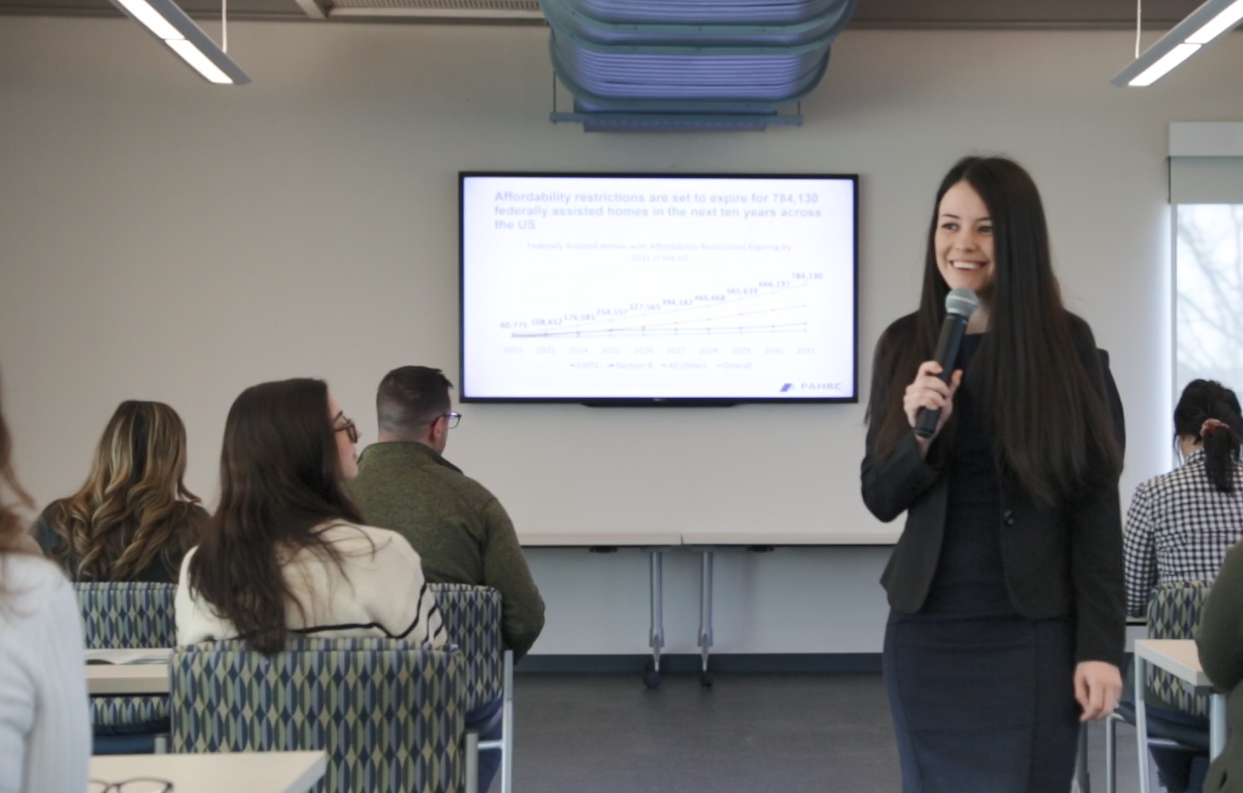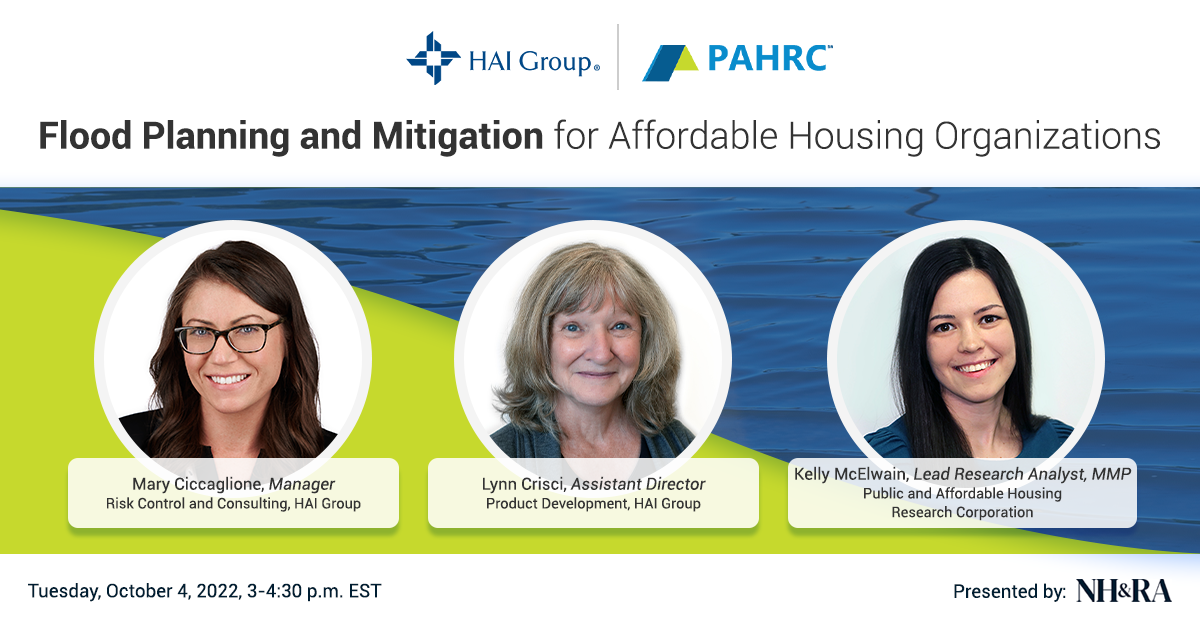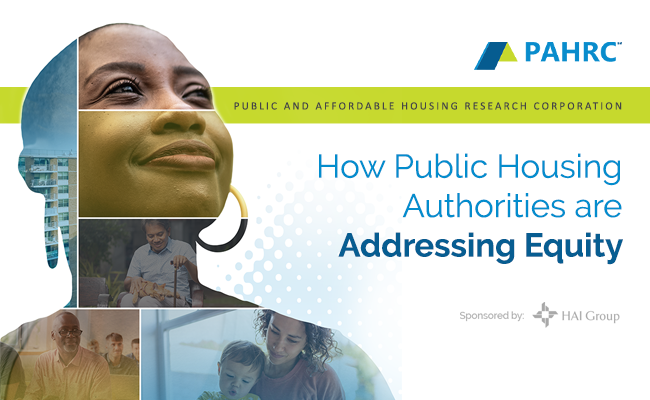At a time when a decent, safe, and affordable place to call home is out of reach for more than 15 million Americans, the preservation of affordable housing is more important than ever. For over a decade, the Public and Affordable Housing Research Organization (PAHRC) has been on a mission to help improve this statistic by providing data, research, and tools to help policymakers, housing providers, researchers, advocates, and other stakeholders raise awareness about this critical issue, and ultimately impact change.
In addition to partnering with some big names in the industry, PAHRC has a longstanding relationship with the affordable housing insurance carrier HAI Group, which has been a key sponsor of PAHRC since its inception in 2012. Both organizations share the same goal of supporting the affordable housing industry through various avenues. Over the years, HAI Group’s financial support has made numerous initiatives possible, from webinar opportunities to obtaining data for PAHRC’s annual Housing Impact Report, and most notably, developing the National Housing Preservation Database (NHPD).
HAI Group’s Staci Canny sat down with Kelly McElwain, a lead research analyst at PAHRC, to discuss her work.
Staci Canny: Thank you for taking the time to speak with me, Kelly. PAHRC has become a significant player in the affordable housing research industry in recent years, but for somebody who has never heard of this organization, how would you describe what PAHRC does?
Kelly McElwain: PAHRC, which is pronounced ‘park,’ is a nonprofit that compiles research and data tools to build an evidence-based case for why affordable housing matters, as well as its effectiveness as a vehicle to change lives and communities. We spotlight the impact, outcomes, and value that affordable housing brings to the people and communities served. We do this by collaborating with industry partners, collecting data, and conducting independent research. PAHRC also delivers data and tools, such as the NHPD, that help local governments and stakeholders develop their affordable housing preservation strategy.
SC: Can you talk about the impact that PAHRC has had on the industry over the years?
KM: Sure. Research sponsored and advised by PAHRC’s research team was referenced by Congress to support the $4 billion in American Recovery and Reinvestment Act funds that public housing agencies, or PHAs, received in 2009. And, PAHRC-advised research was also referenced when HUD’s Moving to Work program, which provides funding and regulatory flexibilities to housing authorities, was expanded in 2016.
The NHPD has also been used by thousands of people to advocate for millions of dollars in funding to build and protect affordable housing, to equip cities with the information they need to develop affordable housing preservation plans, and to position legal aid organizations to better represent tenants’ rights and better protect them from evictions during the recent pandemic.
SC: What does an average day look like for you at PAHRC?
KM: Our research team often works on multiple projects simultaneously, which means my day-to-day can vary greatly. My daily tasks include updating data for the NHPD and supporting its users, analyzing affordable housing programs, writing reports, collaborating with partners on projects, and preparing presentations for webinars and conferences. Juggling so many different projects helps me keep my finger on the pulse of what’s going on within our industry.
 Pictured above is PAHRC's Research Analyst Eric Brushett discussing research with colleagues at a training session.
Pictured above is PAHRC's Research Analyst Eric Brushett discussing research with colleagues at a training session.
SC: Can you share some recent projects that have impacted the industry?
KM: Sure. Our Strategize Start and Sustain report provides a roadmap for PHAs to implement health initiatives, and Strategies for Investing in Opportunity is another report that shares data tools people can use to assess access to health, education, employment, and transit in a community, and describes investment pathways to pursue to help residents achieve economic independence. The Taking Stock report, along with its accompanying webinar and mapping tools, assists with assessing potential exposure to natural hazards and provides resources to plan for and mitigate against disasters. And our Preservation Toolkit summarizes key characteristics of the affordable housing stock in cities across the country and presents strategies local governments can pursue to preserve their affordable housing stock.

SC: Those are some sizable initiatives you’ve developed. Can you expand on how you establish your research agenda?
KM: PAHRC works closely with our board and partners, such as the Council of Large Public Housing Authorities, the Public Housing Authorities Directors Association, the National Association of Housing and Redevelopment Officers, the National Low Income Housing Coalition, and many more, to establish our research agenda. We collaborate with our partners to identify knowledge gaps, misconceptions, and pressing challenges affordable housing providers face.
Our team aims to provide actionable solutions and resources affordable housing providers and local governments can use to more effectively preserve their affordable housing stock and implement policies and programs that provide low-income families with the stability they need to grow and thrive.
SC: I know you’ve achieved a lot in the past decade, but as you look to the future, where would you like to take PAHRC over the next ten years?
KM: Over the next ten years, my goal for PAHRC is to continue pursuing research, building data tools, and delivering presentations that give housing providers resources and insight to help lift more families out of poverty. However, much of this work is impossible without adequate financial and regulatory support from Congress. For that reason, I also aspire to continue producing research that makes a case for the impact that affordable housing provides to equip stakeholders to advocate for the funding and policies needed to expand and protect access to affordable housing.
SC: Thank you for sharing this information with us, Kelly.
If you’re interested in learning more about PAHRC, visit www.pahrc.org to check PAHRC’s latest research reports and data tools. Or, if you’re interested in helping to support its mission of building evidence-based cases for why affordable housing matters, please consider supporting PAHRC with a donation or sponsorship.




